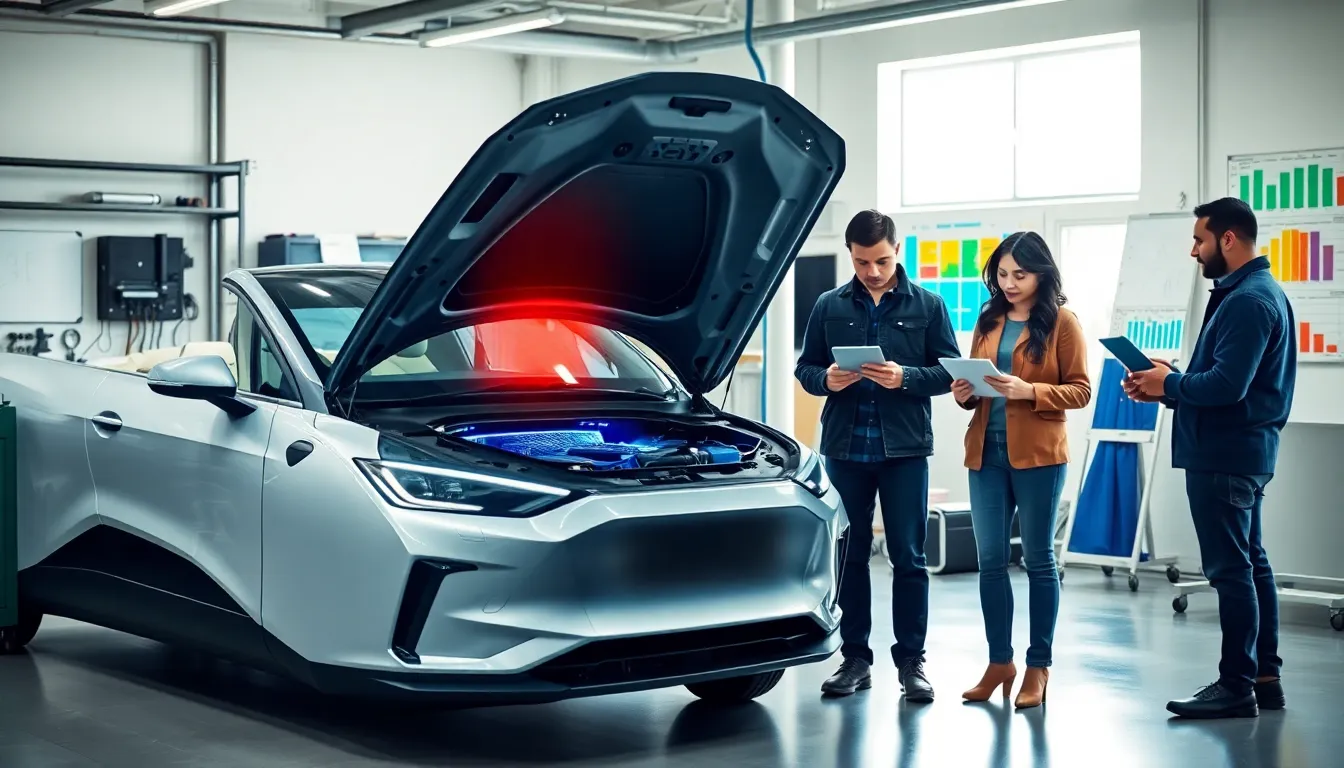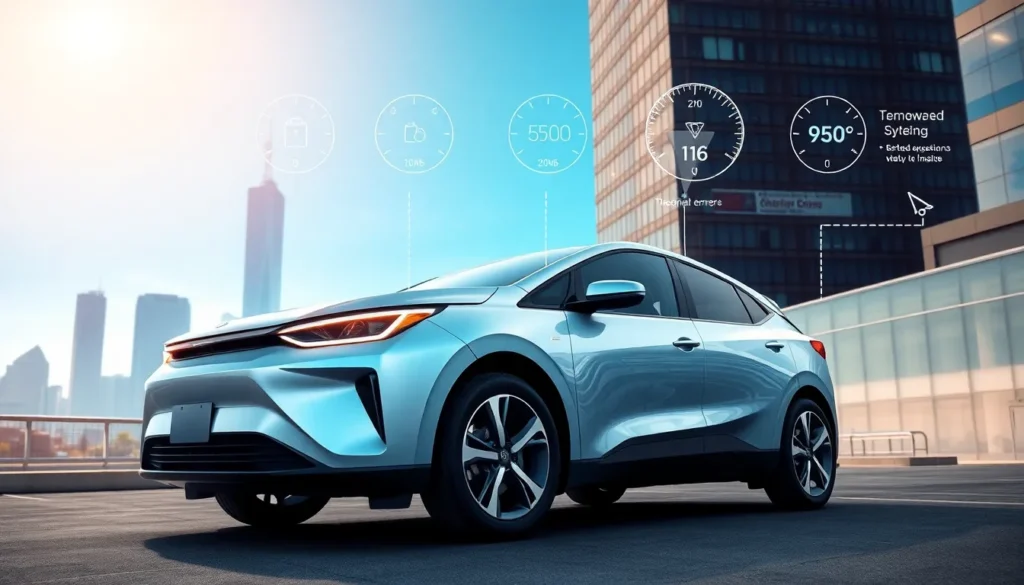Table of Contents
ToggleImagine cruising down the highway in your electric vehicle (EV), the wind in your hair and the world flying by. Yet behind the sleek exterior lies a complex dance of heat that could turn your joyride into a meltdown. Enter thermal management. It’s the unsung hero of the EV world, silently ensuring everything runs smoothly. If you think this sounds thrilling, wait until you jump into the nitty-gritty of how these systems work, and why they are crucial for the future of electric vehicles. Spoiler: it’s not just about keeping your battery from frying.
Understanding Thermal Management

Thermal management in electric vehicles is all about controlling the temperature of various components within the vehicle, especially the battery, electric motor, and other electronics. Why is this so important? Well, every electronic device has an optimal operating temperature. Stray too far from it, and efficiency plummets, leading to reduced performance and lifespan.
In simpler terms, think of an EV’s thermal management system as its personal air conditioner, only instead of cooling you off on a hot day, it ensures that your vehicle’s critical components stay within their happy temperature range under different operating conditions.
This involves a combination of technologies and strategies tailored specifically to an EV’s needs. From heating and cooling systems to vehicle energy management, thermal management plays a pivotal role in optimizing the overall efficiency and safety of electric vehicles.
The Importance of Effective Thermal Management
Why should we care about effective thermal management? The stakes are higher than you might think. First off, let’s tackle battery performance. Lithium-ion batteries, the backbone of EV power, are sensitive to temperature fluctuations. An ideal temperature range enhances their performance and prolongs their lifecycle.
Not only does effective thermal management enhance battery efficiency, but it also boosts overall vehicle performance. Picture this: a thermal management system that can efficiently control temperature variations not only aids batteries during rapid acceleration but also helps extend the range of the vehicle by optimizing energy usage. In other words, it’s a win-win.
Also, with the automotive industry shifting toward greener alternatives, proper thermal management ensures that manufacturers comply with safety standards and regulations about emissions. An efficient thermal management system can even reduce the environmental footprint of electric vehicles, making them not just a choice, but the responsible choice.
Key Components of Thermal Management Systems
Venturing further into the components of thermal management systems reveals a fascinating interplay of technology and engineering. Let’s break it down:
Types of Thermal Management Solutions
Thermal management solutions can be broadly categorized into active and passive systems. But what’s the difference? Active systems deploy mechanisms that actively manage heat, while passive systems do so through inherent design and materials.
This dual approach equips manufacturers with options tailored to specific needs. Great versatility leads to great innovation.
Active Thermal Management Systems
Active systems often include liquid cooling and heating circuits, pumps, and fans that work together to regulate temperature. For instance, using liquid coolant to absorb excess heat from the battery pack ensures even distribution of temperature, particularly during high energy demand.
These solutions are vital for high-performance applications, where efficiency means everything. The power of active management can significantly enhance range and reliability, especially under demanding conditions.
Passive Thermal Management Systems
On the flip side, passive thermal management systems rely on materials and design features such as thermal insulation, phase-change materials, and heat sinks. These systems are often lighter and more straightforward, allowing simpler integration into vehicle designs. While they may not react as quickly as their active counterparts, shrewd usage of passive methods can ensure a baseline performance is maintained under standard operating conditions.
Combining both active and passive strategies leads to a robust thermal management framework that maximizes the potential of electric vehicles.
Innovative Technologies in Thermal Management
As technology advances, so does thermal management in electric vehicles. One exciting innovation is the use of phase-change materials (PCMs). These ingenious substances absorb and release thermal energy during their phase transitions, acting almost like a thermal sponge. They hold promise for maintaining consistent temperatures, especially during extreme weather conditions.
Also, sophisticated software algorithms play a crucial role in thermal management. They analyze real-time data from various automotive components, predicting heat generation and optimizing the cooling process. Think of it as your EV having its very own smart assistant that keeps an eye on heat levels and makes adjustments proactively.
Another groundbreaking technology is the integration of heat recovery systems. By reclaiming waste heat from the motor and other components, these systems provide an additional energy source to heat the cabin, improving efficiency while keeping passengers cozy. Talk about a two-in-one solution.
Challenges and Future Trends in Thermal Management
While the future of thermal management in electric vehicles looks bright, challenges remain. Adapting to rapid technological changes and increasing consumer demands for range and performance can be daunting. Designing systems that not only manage heat effectively but also do so in a cost-efficient manner is crucial for manufacturers.
Also, as electric vehicles evolve, the adoption of solid-state batteries poses unique challenges in thermal management. These batteries operate differently from traditional lithium-ion battery technology, requiring new approaches to heat regulation to prevent inefficiencies.
Future trends may see advancements in nano-coating and additive manufacturing that yield even more efficient thermal management systems. Besides, as autonomous driving technology progresses, there will be an increased need for intelligent thermal management solutions that respond dynamically to a fluctuating environment. The landscape of thermal management is ever-evolving, driven by innovation and the quest for greater efficiency.







